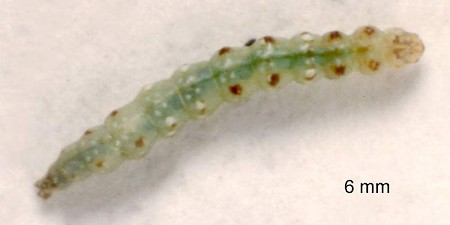Bedellia somnulentella

24.001 BF264
Bedellia somnulentella
(Zeller, 1847)
Wingspan 8 mm - 10 mm.
B. somnulentella is widespread in southern Britain, but it is subject to huge fluctuations in numbers. Before 1998 it had never been recorded in Cheshire, but in that year the larvae were found in over 20 localities the length and breadth of the county. It was also found then in Denbighshire, S. Lancashire and Derbyshire for the first time. Since then there have been very few sightings in these counties.
The adults occur in two generations; in August and October to May, being 'somnolent' in the winter months. Its coastal propensity may be due to the need for mild winter conditions rather than migratory influx, at least in its more northerly haunts.
The distinctive larva feeds on bindweeds (Calystegia and Convolvulus spp.) and Morning glory (Ipomoea) in July- August and in September. At first it makes a narrow gallery lined with frass, but subsequently it makes a series of large translucent yellowish brown blotch mines from which all frass is ejected. It also constructs under the leaf an 'aerial' network of silk threads in which it moves around and rests clear of the leaf surface when not feeding. Resting in the threads has been reported in Japan, but MBGBI 2 states that this habit has not been observed in Europe. The habitation picture on this website may be the first European confirmation of the Japanese observation. Frass often catches in the web.
The pupa is attached to a leaf without a cocoon. It has a dorsal keel and a pronounced facial beak.

 UKMoths
UKMoths 





